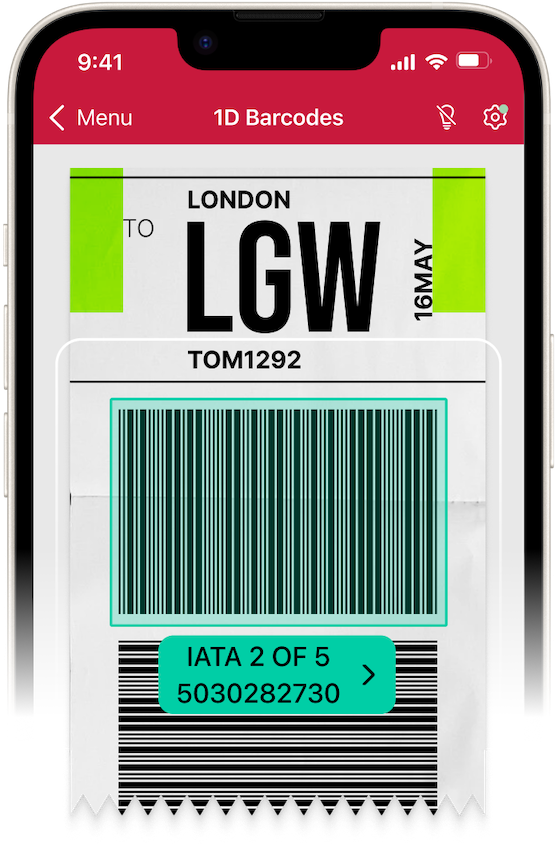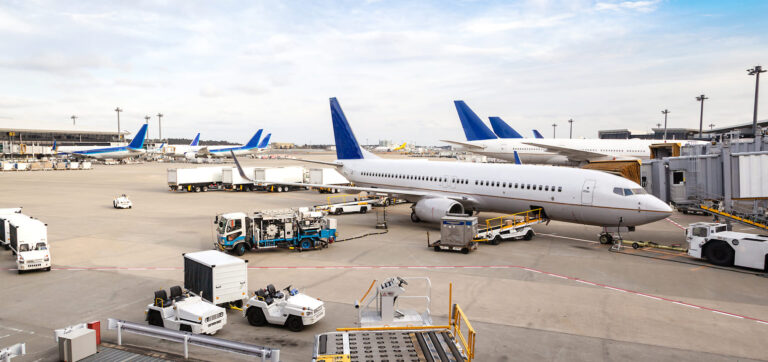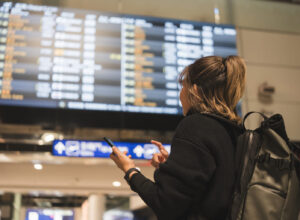Anyone who’s ever had their luggage lost on a connecting flight knows how frustrating this can be, especially if staff has no information about its whereabouts.
Understandably, this results in negative reviews and, if it becomes too common, can seriously damage a carrier’s reputation. That’s why airlines are increasingly trying to proactively locate lost luggage instead of waiting until a passenger reports it missing.
The key to keeping track is to use professional scanning software to read the barcodes on luggage tags.
Using barcode scanning to combat luggage loss
On international flights, 19.3 bags per 1,000 passengers are mishandled overall (2.4 on domestic flights). 80% of these are simply delayed. Since transfer mishandling is the leading cause of delayed bags, layovers are a common source of frustration for passengers.
This means the risk of arriving without your checked luggage is markedly higher on a connecting flight. Among the reasons for this are tight connection times, staff shortages, and airport congestion, along with the overall complexity of layovers.
Lost and delayed luggage has a noticeable impact on an airline’s bottom line due to the high costs of reflighting or compensation and brand damage. Although the intricacies of international air travel make it hard to prevent, one thing airlines can do is be more proactive in locating mishandled luggage.
Mobile scanning is a useful tool here: As soon as it becomes apparent that luggage will not reach the designated aircraft, staff should scan one of the three barcodes typically featured on a bag’s tag. These all encode the same information: the “license plate,” a 10-digit identifier. This ID consists of a 3-digit Baggage Tag Issuer Code (BTIC), which identifies the responsible airline or CRS (Computer Reservation System), and a 7-digit bag ID.

The license plate number links the luggage to its digital BSM (Baggage Source Message), which contains all the information needed to match the bag to its owner. Notifying the destination airport’s staff about the mishandling can be automated via a Baggage Reconciliation System.
Implementing a Baggage Reconciliation System (BRS)
To reliably track luggage across connecting flights – and comply with IATA regulations – its license plate barcode needs to be scanned at least four times at particular points during its journey. The resulting tracking data has to be made available to all those involved in its handling:
- At the check-in counter, when the luggage is initially tagged.
- When loading onto the aircraft.
- During transfer, to ensure proper routing.
- When the bag arrives at the destination airport’s delivery belt.
This procedure forms the foundation of a Baggage Reconciliation System. Additional features of a BRS include:
- Passenger matching: Checking whether each bag is positively matched to a verified boarded passenger before loading it onto the aircraft.
- Real-time monitoring: Letting airport employees view the live status of each piece of luggage.
- Alert mechanism: Notifying luggage handlers about bags that need to be offloaded if a passenger doesn’t board the flight.
These measures improve operational efficiency, reduce luggage mishandling, and in turn enhance passenger satisfaction. They also increase flight safety and security by ensuring only authorized bags are loaded.
The effectiveness of a BRS stands and falls with the barcode scanning solution used for reading luggage tags. Reliable performance in poorly lit environments and when scanning worn tags is particularly important. When developing the Scanbot Barcode Scanner SDK, we prioritized precisely that.
Scanning luggage tags with the Scanbot Barcode Scanner SDK
Our Barcode Scanner SDK reliably scans all common 1D and 2D barcodes – including IATA 2 of 5 – even when they are damaged, poorly lit, very small, or far away. It operates entirely offline and never connects to third-party servers, guaranteeing data privacy and security.
The SDK can easily be integrated into any mobile or web app to be run on as many devices as needed. Thanks to its flat-rate pricing, the number of users and scans doesn’t affect your costs.
Designed with interoperability in mind and coming with extensive documentation, our Barcode Scanner SDK will seamlessly interface with your BRS.
Experience the SDK’s intuitive scanning features for yourself by trying the free demo apps. If you have any questions concerning your specific use case, contact us at sdksupport@scanbot.io.



